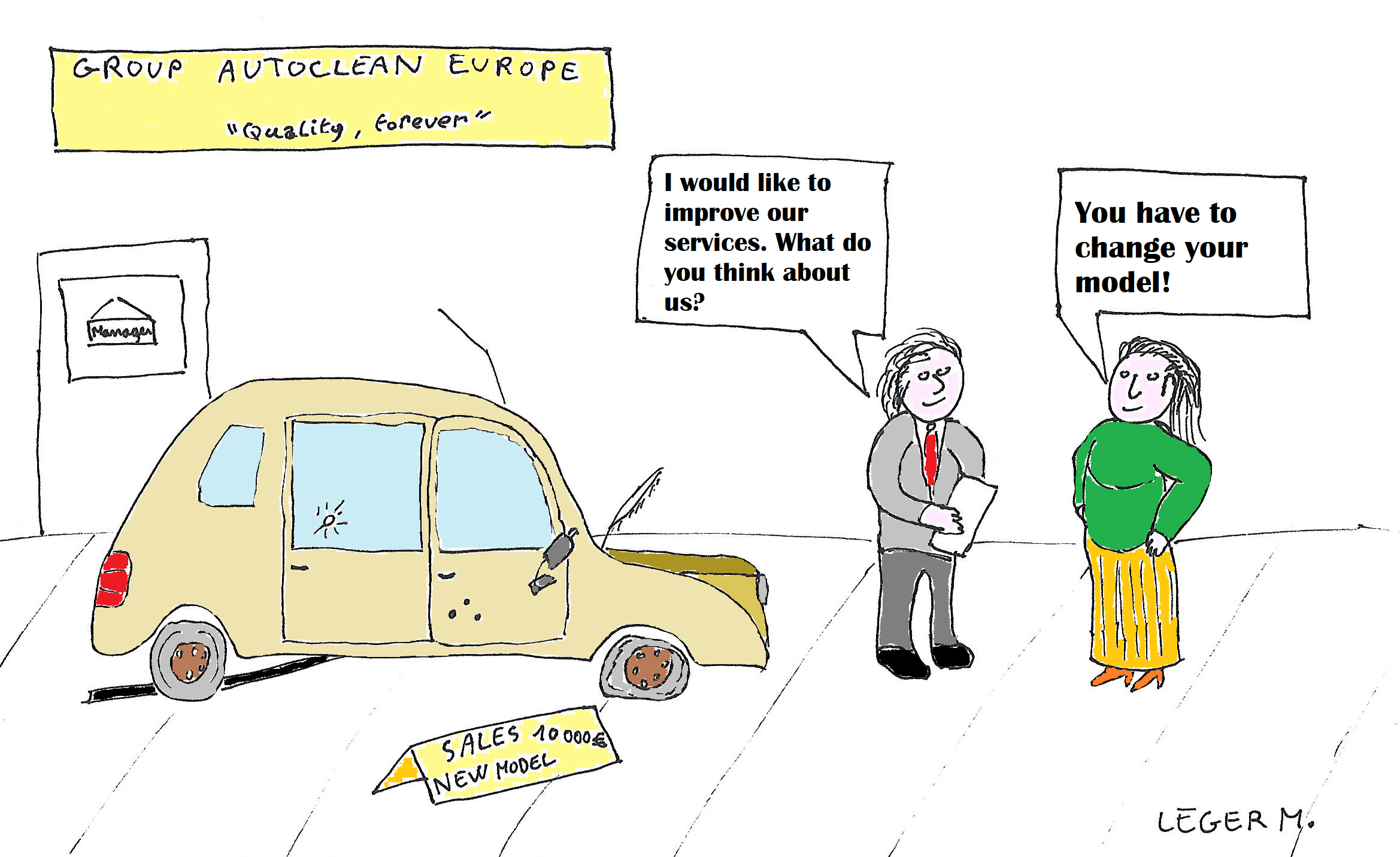Feedbacks from customers, a good way to improve your business
Today, every business are faced to customer’s returns/feedbacks. You have to listen to them. In fact, those returns and/or feedbacks might be linked to several issues encountered by the final delivery, the quality involved is not where it should be and it might impact negatively your business development and results.
To solve and find solutions to those issues, as a first ACT, you need to collect data and analyze them before improving your processes. If you do not perform this initial step, you will go in the wrong direction, you will not take the best decision for your business, you will not reach excellence and you might lose money. Are you willing to do that? I guess, no.
Well, in this article, I will give you three methods on how to improve your business with feedbacks and returns from customers.
The survey
If you desire to know what your (potential) customers (do not) want and/or you wish to improve the quality of your products/services, you have to realize some surveys. These jobs might be done physically (for example to test a new product) or online with google forms. If you are afraid to do that with the two previous methods, you can use ideas boxes concept to collect those feedbacks.
Using google docs instead of ideas boxes to perform surveys might have some advantages:
- Completed online by people (zero paper)
- Access to the full data on an online spreadsheet to perform deeper analysis
- Instantaneous results (after people completed the template)
- Individual analysis possible
- Global analysis question by question with visual (graphs)
- Easy to take immediate action to protect your business and customers
With a survey, you will guide your (potential) customers through predefined questions with (generally) predefine answers.
If you have only very few people responding to your survey (example: less than 5), their answers might be unrepresentative to perform significative changes but it might represent a tendance.
When you have a representative population and if on specific questions, you have a majority of people replying identical answers, you have to put in place those actions (linked to questions) to satisfy your clients and prospects as soon as possible.
Example within a service company:
 |
 |
In this example, we can see that almost 33% of people are not satisfied by the quality of the service at the reception and we observe that almost 63% of your people are waiting more than 10 minutes. In this example and following results, to have a better service at the reception, the manager has to take several actions: review/simplify the reception process, train well receptionists to avoid a long queue, put someone more at the reception…
Only a deep data analysis will allow you to take best decisions in your business.
But to improve your business and your level of quality, a survey is not enough. Interviews will help you to be more precise and to collect details from your (potential) customers.
The interview
As you can see, with a survey, you will guide your (potential) customers through different questions and generally with limited answers (ex: Yes/No,…). To allow you to have more feedbacks and comments from them, you have to perform interviews. All interviews have to be planned, face-to-face and well-prepared. Advantages from interviews are:
- You have direct contacts with your customer
- You will facilitate the customer’s relationship because some clients prefer the face-to-face than the survey (a lot of email/spam received and they do not like it)
- You show to them that you are taking care of them and you want to improve yourself to better meet their requirements
- You can collect further feedbacks that a survey do not give you
- Your (potential) customers can alight you some points that a survey exclude or that you ignore
- You can investigate blocking points by using, for example, the „5 why” methodology
With this method, you will develop your customer’s relationship, know exactly their needs and receive some ideas to reach excellence and reduce your costs (by making correct expenses).
Someday, for a co-working in Kraków, I collected data from one of its potential customers, who was going here times to times for meetings. After the interview that I got with him, I alighted to the owner (of the coworking) that there were some issues about the painting on walls, lightings in all rooms and rugs on floors. The owner told me that he received some similar comments from other customers. As a consultant, I requested to react immediately to protect his business. The owner told me that he didn’t have finances for it. But, several weeks later, when he got the money to do it, he decided to rearrange one conference room (with new paintings and lightings) to meet customers’ requirements.
As you can see, without interviews (and because he did not put in place surveys at the beginning), he could not improve its business and was failing with his activity. But some feedbacks must allow you to react immediately: complaints.
The customer's complaint
In industry (or in other businesses as well), when one or several goods do not respect defined standards and you send those goods to your customer, you might receive customer complaints. If you do not react as soon as possible and you are continuing to send parts which do not respect quality’s standard, your customer is in right to send you some debit notes which will impact negatively your financial results (an increase of your costs).
When you received a complain, you have to perform a problem-solving action (QRQC, 5 why,…). Your first ACT is to collect data (where do you have the default on the parts, what kind of default, how many parts affected, when it’s happened…). This step is crucial because it will allow you to determined your potential root causes (PLAN). Then you have to DO immediate measures to protect your company and customers (supplementary quality control,…). Then you have to CHECK the immediate measures’ effect before putting in place LONG-TERM ACTIONS to meet your customer requests (5S, change of design, change in process…). Without reacting immediately, you can put your company in risk and lose a lot of money.
So, have you already tried those 3 methodologies to improve your business? What were your results and issues? Please, feel free to contact our consultant or to give your feedback below.

